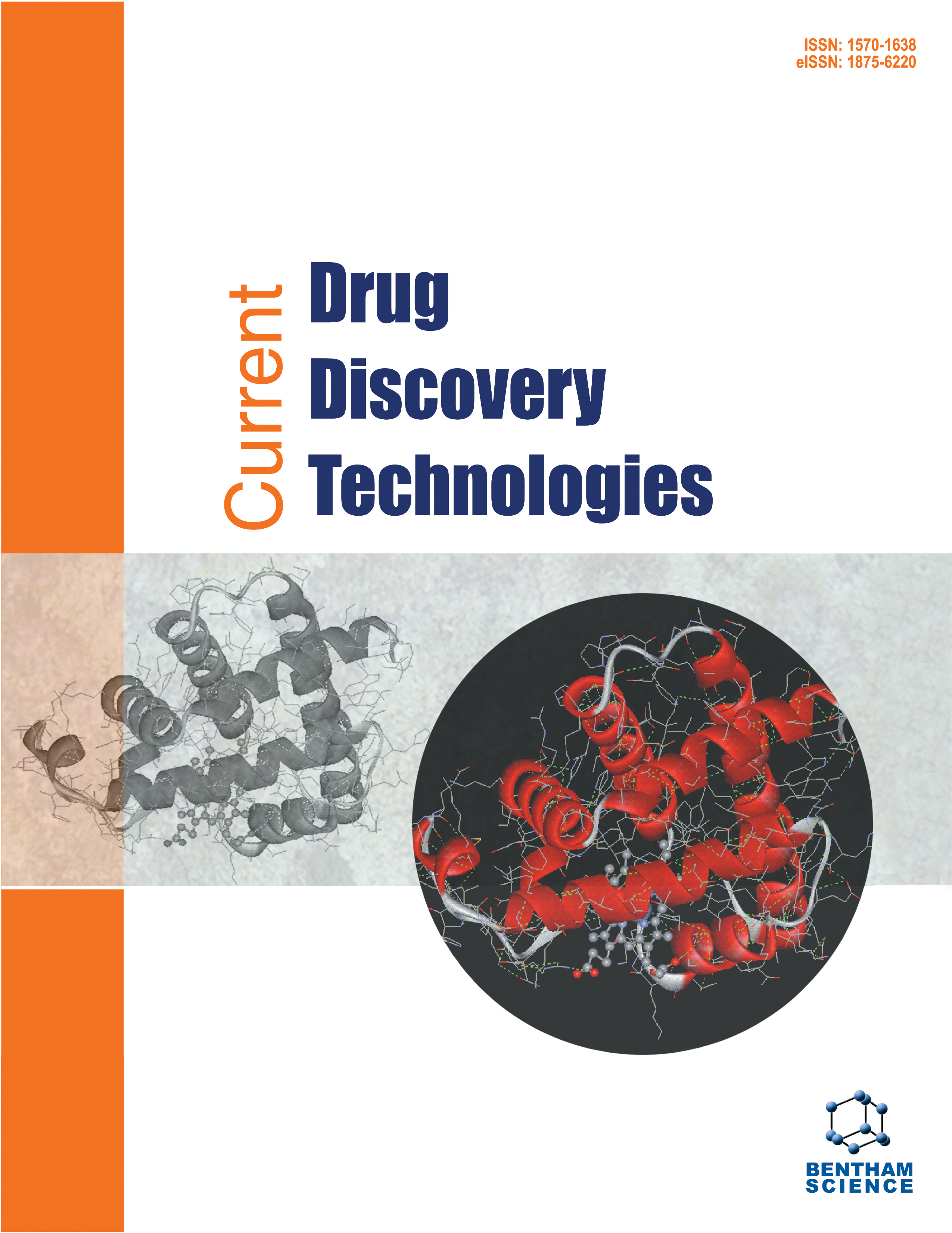- Home
- A-Z Publications
- Current Drug Discovery Technologies
- Previous Issues
- Volume 13, Issue 4, 2016
Current Drug Discovery Technologies - Volume 13, Issue 4, 2016
Volume 13, Issue 4, 2016
-
-
GENIUS In Silico Screening Technology for HCV Drug Discovery
More LessAuthors: Vaishali M. Patil, Neeraj Masand and Satya P. GuptaThe various reported in silico screening protocols such as molecular docking are associated with various drawbacks as well as benefits. In molecular docking, on interaction with ligand, the protein or receptor molecule gets activated by adopting conformational changes. These conformational changes cannot be utilized to predict the 3D structure of a protein-ligand complex from unbound protein conformations Read More
-
-
-
Phytochemistry and Phytotherapeutic Aspects of Elaeagnus angustifolia L.
More LessAuthors: Farid Niknam, Amir Azadi, Alireza Barzegar, Pouya Faridi, Nader Tanideh and Mohammad M. ZarshenasPersian or Russian olive (Elaeagnus angustifolia L.), from the family Elaeagnaceae, is a nitrogen-fixing thorny shrub extensively used in traditional medicine to alleviate pain and treat rheumatoid arthritis, osteoarthritis, gastrointestinal problems, fever, and asthma. The current review has tried to give a concise overview of the phytochemistry and pharmacological properties of the plant from published data. Accordingly, publish Read More
-
-
-
Advances in Drug Discovery: Impact of Genomics and Role of Analytical Instrumentation
More LessDrug discovery is a highly complicated, tedious and potentially rewarding approach associated with great risk. Pharmaceutical companies literally spend millions of dollars to produce a single successful drug. The drug discovery process also need strict compliance to the directions on manufacturing and testing of new drug standards before their release into market. All these regulations created the necessity to develo Read More
-
-
-
Peptides for Anti-Ebolavirus Vaccines
More LessBy Darja KanducBackground: Two main factors can affect the development of ebolavirus immunotherapeutics: the vast peptide commonality between ebolavirus and human proteins, and the high rate of spontaneous mutation of ebolavirus within its human host. Indeed, the viral versus human peptide overlap may represent a relevant source of autoimmune crossreactions following vaccination, while ebolavirus genome mutations can li Read More
-
-
-
Genetic Algorithm and Self-Organizing Maps for QSPR Study of Some N-aryl Derivatives as Butyrylcholinesterase Inhibitors
More LessAuthors: Shahin Ahmadi and Soroush GanjiBackground: Alzheimer's disease is the most common form of dementia, characterized by loss of neurons and synapses in the cerebral cortex and certain subcortical regions, leading to altered and unsuitable activities. In this study, we focused on the influence of rndom selection (RS) and SOMs (self-organizing maps) data splitting on the external predictivity of quantitative structure-property relationship (QSPR) models of some N Read More
-
-
-
Developing and Evaluating In Vitro Effect of Poly(Ethylene Glycol) Conjugated Curcumin on Human Cancer Cell Lines
More LessAuthors: Bui Thanh Tung, Nguyen Thanh Hai and Phan Ke SonBackground: Curcumin has been shown to possess strong cytotoxic effect against various cancer cell lines. However, curcumin has not applied as a drug for treatment of cancer yet due to low solubility in water and low bioavailability. The aims of this study were to prepare a new polyethylene glycol (PEG) conjugated curcumin and to evaluate its antitumor activity in vitro. Methods: PEG-CUR was prepared by the reaction betwee Read More
-
Volumes & issues
-
Volume 22 (2025)
-
Volume 21 (2024)
-
Volume 20 (2023)
-
Volume 19 (2022)
-
Volume 18 (2021)
-
Volume 17 (2020)
-
Volume 16 (2019)
-
Volume 15 (2018)
-
Volume 14 (2017)
-
Volume 13 (2016)
-
Volume 12 (2015)
-
Volume 11 (2014)
-
Volume 10 (2013)
-
Volume 9 (2012)
-
Volume 8 (2011)
-
Volume 7 (2010)
-
Volume 6 (2009)
-
Volume 5 (2008)
-
Volume 4 (2007)
-
Volume 3 (2006)
-
Volume 2 (2005)
-
Volume 1 (2004)
Most Read This Month
Article
content/journals/cddt
Journal
10
5
false
en


